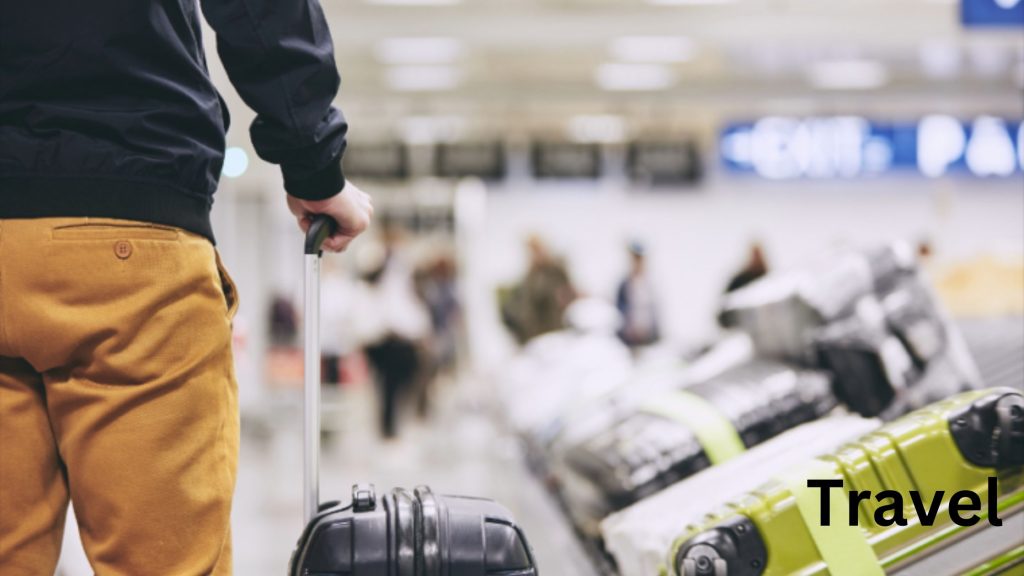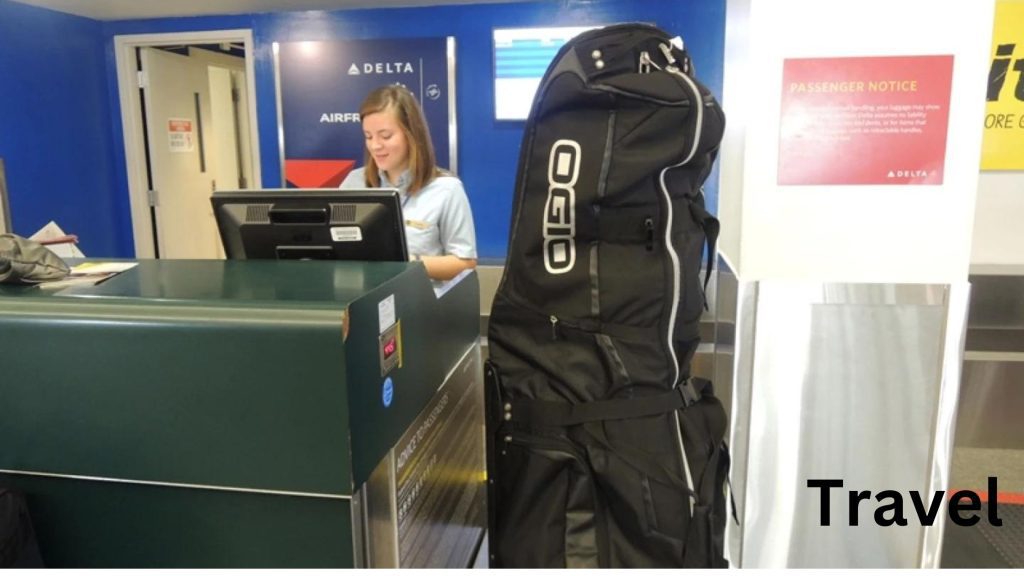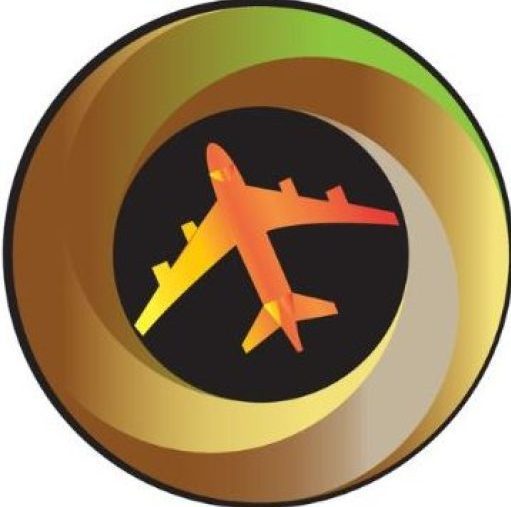Flying with golf clubs without a travel bag is not advisable due to the risk of damage. Airlines typically require golf clubs to be adequately protected during flights.
Traveling with golf clubs can be a hassle, especially when you’re not equipped with a travel bag designed specifically for them. Golf clubs are an investment, and like any valuable equipment, they require proper care and protection, which a travel bag provides.
Without one, you’re exposing your clubs to potential harm, considering the rough handling baggage often endures during air travel. This is why most airlines insist on adequate protection for sports equipment. Securely packing your clubs in a padded travel bag ensures their safety and gives you peace of mind as you navigate through airports and onto your flight. With the proper precautions, you can ensure your golf clubs arrive ready for the green, even after a long journey in the sky.
Challenges Of Flying With Golf Clubs
Traveling with golf clubs can be tricky. It would be best if you considered how to protect your clubs while in the air. With a travel bag, this task becomes manageable. Here’s why flying with your golf clubs can pose a challenge.
Risk Of Damage In Transit
Your golf clubs could get damaged on the flight. Airplanes have a lot of luggage moving around. This can cause scratches, dents, or more severe damage to your clubs if they’re not well protected. Let’s explore how.
- Handling- Baggage handlers might drop or stack bags heavily.
- Movement- Turbulence or sudden shifts could mean clubs hitting each other.
- Pressure-Other luggage can put pressure on clubs, causing damage.
Airlines’ Sports Equipment Policies

Airlines differ in their approach to sports equipment. Checking your clubs as traditional luggage might not be an option. Policies vary widely regarding allowed dimensions and weight. Some may have extra fees or require special handling. Review what different airlines say in the table below.
Airline Max Dimensions Max Weight Additional Fee
Airline A 62 inches 50 lbs No
Airline B 45 inches 70 lbs Yes
Airline C 50 inches 40 lbs Yes, varies by destination
Before you fly, check with your airline about golf equipment rules. Book in advance if necessary to ensure a smooth journey for your clubs.
Pre-flight Preparations
Heading to the skies with your golf clubs? Properly preparing them for air travel ensures they arrive ready for tee time. A solid start to your journey begins with an intelligent pre-flight strategy. Let’s guide you through the essential steps to consider.
Flying with golf clubs without a travel bag, Reddit
Flying with golf clubs without a travel bag can be nerve-wracking, but some Redditors have shared their experiences and tips to make it smoother. One user recommended wrapping the clubs in bubble wrap or towels and securing them with duct tape to protect them during transit.
Another suggested asking the airline for a cardboard box or using a sturdy cardboard tube to contain the clubs. While it may not be ideal, improvisation and careful packing are the keys to ensuring your golf clubs arrive safely at your destination.
Selecting The Right Airline For Golf Gear
Not all airlines treat golf gear the same. Research and choose airlines that offer special provisions for sporting equipment. Here are key factors to keep in mind-
- Additional Fees- Check on extra charges for sports equipment.
- Baggage Policy- Review the airline’s baggage size and weight limits.
- Handling Care- Some airlines are noted for better care of golf clubs.
A table can assist in comparing options-
Airline Additional Fees Size/Weight Limit
Airline A $30 50lbs/62in
Airline B is Free with limits of 40lbs/70in
Understanding TSA Guidelines For Golf Equipment
Prepare your clubs to meet TSA’s regulations. These steps ensure a smooth check-in-
- Wrap club heads with bubble wrap for protection.
- Use a sturdy, padded case, even if it’s not a travel bag.
- Lock the case, but only with a TSA-approved lock.
Remember, prohibited items include club cleaners and specific tools. Always visit the TSA website before your trip for the latest updates.
Packing Golf Clubs Without A Travel Bag
Taking golf clubs on a plane can be tricky without a travel bag. Fear not! Proper packing ensures your clubs remain safe and arrive in one piece. This post will guide you through DIY Protection Tips and Alternative Packing Materials.
Diy Protection Tips
At home, create a shield for your clubs with items on hand. Starting with bubble wrap, towels, or even old newspapers can provide padding. Secure these around each club head using rubber bands or tape.
- For optimal protection, individually wrap each club.
- Use padded blankets or sleeping bags to surround your club set.
- Fix a sturdy rod longer than your driver to protect club shafts from bending.
Alternative Packing Materials
Need something more for those precious clubs? Head to your local hardware store for pipe insulation or foam noodles. Both make excellent buffers for golf clubs. Cardboard tubes can also act as protective sheaths for your iron shafts.
- Slip pipe insulation over the club shafts.
- Place golf clubs inside large cardboard tubes.
- Ensure each club has a foam noodle jacket for the journey.
Finished with that? Secure your makeshift golf club cocoon with durable duct tape or strong straps. Now, your clubs are set for a smooth flight!
Securing Golf Clubs
Traveling with golf clubs without a travel bag can be tricky. Clubs must stay safe. Securing them correctly is critical to arriving with everything intact. Use these suggestions to safeguard your equipment.
Tying And Locking Techniques
Golf clubs need firm fastening to prevent damage. Start by wrapping the club heads. Bubble wrap works well. After wrapping, use sturdy straps. Cross the straps for extra hold. Lock mechanisms should be checked to ensure tight seals. Use locks that the Transportation Security Administration (TSA) has approved.
- Wrap club heads individually.
- Cross straps around the clubs.
- Choose TSA-approved locks.
- Double-check tightness.
Safety Checks Before Departure
- Inspect all secured clubs.
- Perform a shake test. Clubs should not move.
- Look for loose parts or straps.
- Check weather conditions. Adapt securing techniques if needed.
Before leaving, go through a final checklist. Ensure no movement occurs when you handle the clubs. The last thing is a visual check. Clubs should be snug and immovable.
Check Type Action Expected Outcome
Visual Look at each club No visible shifts
Physical Grip and slight shake, No rattling or movement
Final Sweep Review the whole setup Clubs are secure and ready for travel
Remember to label your clubs clearly with your contact information.
At The Airport

Embarking on an adventure with golf clubs in tow? Landing at the airport sans a travel bag demands deft navigation.
Check-in And Declaration Process
Arrive early to allow extra time for check-in. Be ready to answer questions about your golf clubs.
- Declare them as sports equipment at the airline counter.
- Detach heads from shafts, if possible, to avoid damage.
- Use bubble wrap or clothes to protect your clubs.
- Expect a possible oversized or overweight fee.
Handling Oversized Luggage
After check-in, proceed to oversized baggage.
- Locate the oversized or fragile luggage area.
- Submit your golf clubs for special handling.
- Ensure they have a fragile label.
- Confirm the final pickup point on arrival.
Remember, patience is vital. Good luck, and enjoy your flight!
During The Flight
Boarding a plane with golf clubs and not using a travel bag sounds tricky. You might need help keeping your gear safe during the flight. Let’s dive into how to watch your clubs and understand airline rules.
Monitoring Your Equipment
Stay alert to your clubs’ location. Airlines may ask you to check in sports equipment. You can request a fragile tag, which does not guarantee special care.
Once you board, inform a flight attendant about your clubs. They can help monitor your items, ensuring they stay undamaged.
Insurance And Liability
Airline Policy Your Action
Most have a liability limit. Check this limit before flying.
Some do not cover sports equipment. Ask about your clubs specifically.
Limited time to claim for damage. Inspect and report immediately after landing.
A personal insurance policy may provide better coverage. This can give you peace of mind, allowing you to focus on your trip and upcoming game.
After Landing
Touching down after a flight, golf aficionados might fret about the state of their prized clubs. Navigating through the airport becomes the next course to tackle. The focus swiftly shifts to baggage claim and the health of your gear. Let’s look at how best to manage this final leg of your traveling-with-golf-clubs journey.
Collecting Golf Clubs At Baggage Claim
Once your plane lands head straight to the designated baggage area. Pay attention to the carousel number for your flight. You can find it on the screens around the claim zone or by asking airport staff. Keep your baggage claim ticket handy; it’s crucial for identifying your bags and sorting out issues, should there be any. Golf clubs often come out on oversized or irregular luggage belts, so watch for those areas. Patience is vital as clubs may take longer to arrive.
Inspecting For Potential Damage
When your clubs roll out, immediately check for external damage. Look for bends, breaks, or dents on the shafts and heads. Open your golf bag right there to ensure everything is intact. If you find damage, promptly report it to the airline customer service desk. Filing a report before leaving the airport is vital for insurance or reimbursement claims. Remember to photograph any damages; it will serve as evidence.
Flying with golf clubs without a travel bag review
Flying with golf clubs without a travel bag was a bit nerve-wracking initially, but ultimately, it was a surprisingly smooth experience. I wrapped each club carefully in bubble wrap and secured them with tape before placing them in a sturdy cardboard box.
At the airport, I was worried about potential damage during handling, but the staff handled the box carefully. Upon arrival, all my clubs were intact, and I didn’t notice any dents or scratches. While investing in a proper travel bag is advisable for frequent flyers, this makeshift solution proved effective for a one-time trip.
Immediate Actions Upon Collecting Golf Clubs
1. Verify the carousel number
2. Locate the oversized luggage belt
3. Inspect clubs for visible damage
4. Open and check contents thoroughly
5. File a report for any damages
6. Take photos of damages for records
Tips For the Next Trip

Planning your next golfing trip requires more than just packing clubs. Protecting your gear is critical. Consider these tips for a worry-free journey to the links.
Benefits Of Investing In A Golf Travel Bag
- It prevents damage during transit and keeps clubs safe.
- Convenience on the go with wheels and padded straps.
- Extra pockets for storing shoes and accessories.
- Durable materials resist wear and tear, lasting longer.
Frequent Flyer Strategies For Golfers
Smart packing and planning make flying with clubs easier. Follow these strategies:
Strategy Description
Rent or Borrow Consider renting clubs at your destination to save on travel hassle.
Fly with Less Take only essential clubs to reduce weight and bulk.
Use Padding Wrap clubs in bubble wrap or clothing to provide extra protection.
Check Airline Policies Verify baggage limits and fees in advance to avoid surprises.
Frequently Asked Questions On Flying With Golf Clubs Without A Travel Bag
Can You Fly With Golf Clubs Without A Travel Bag?
Absolutely. Airlines allow golf clubs as checked luggage. However, without a travel bag, the risk of damage increases. Wrapping the club heads at least for protection during transit is recommended.
What Are The Risks Of Flying With Golf Clubs Unpacked?
Flying without a travel bag for your golf clubs exposes them to possible damage: scratches, dents, or bending, especially during baggage handling. It could also lead to lost clubs if they become separated.
Are There Airline Fees For Oversized Sports Equipment?
Most airlines charge additional fees for oversized sports equipment like golf clubs. Fees vary per airline, so checking your carrier’s policy and rates before flying is wise to avoid surprises.
How To Protect Golf Clubs When Traveling Without A Bag?
Use bubble wrap or padding around club heads. Secure them with tape and consider a makeshift cardboard box for protection against impacts. Clearly label your items with your contact information.
Conclusion
Traveling with golf clubs sans a travel bag can be daunting, yet it’s feasible with the right approach. Embrace the challenge, protect your clubs with clever wrapping, and always check airline policies. Your passion for golf doesn’t have to leave your clubs behind.
Swing into your golf vacation with confidence and ease!

I am a travel specialized writer and blogger based in the USA and UK, CANADA. I have four years of experience in travel and all types of tours. So I work on solving these issues and give various tips on these issues. I handling carefully of these issues.

